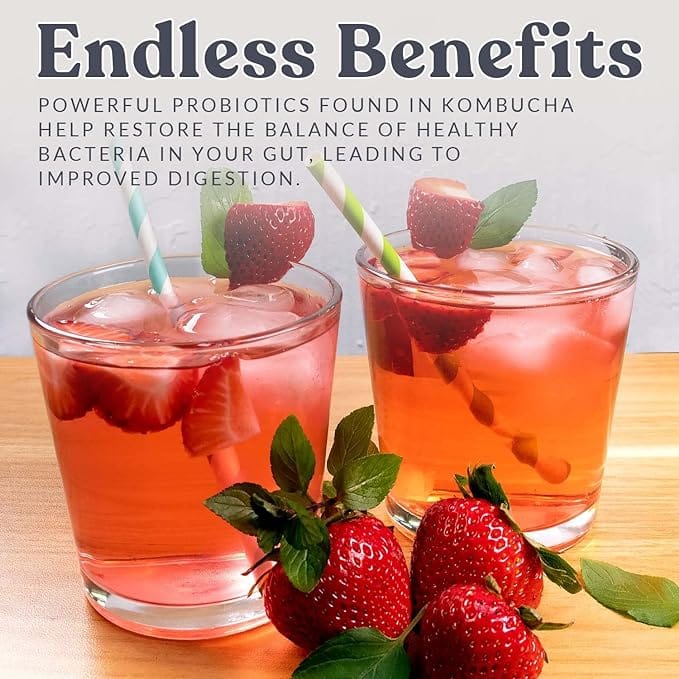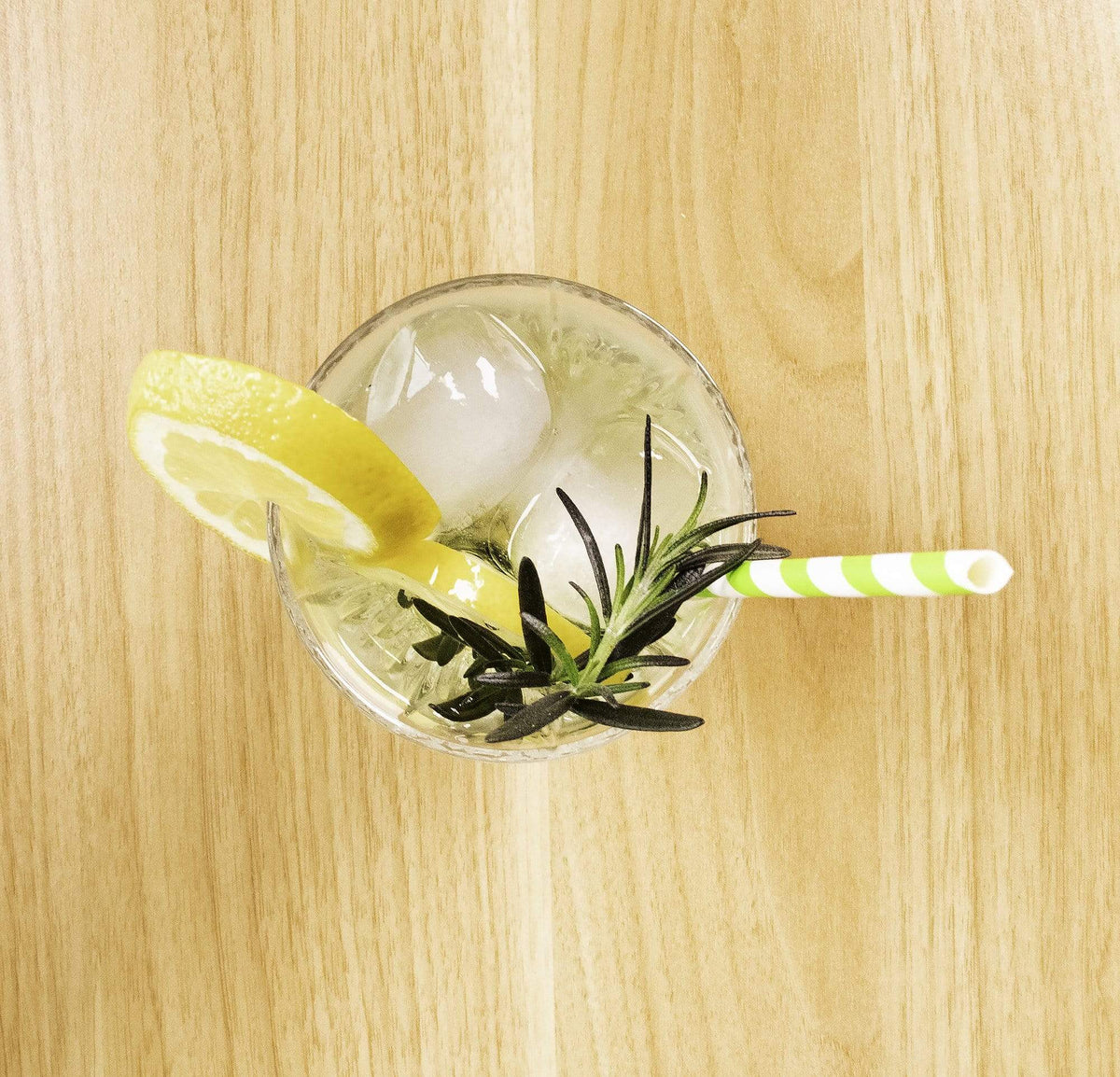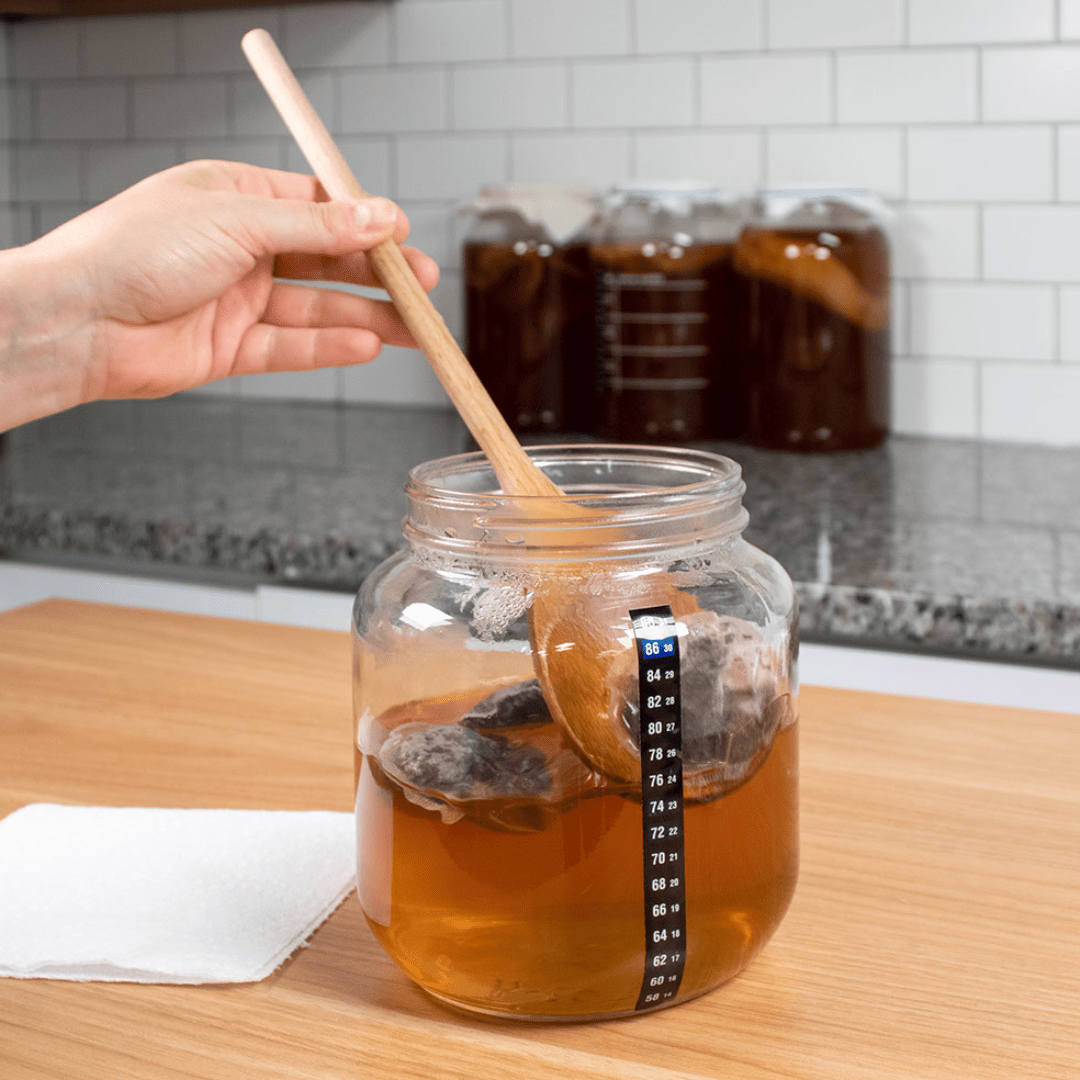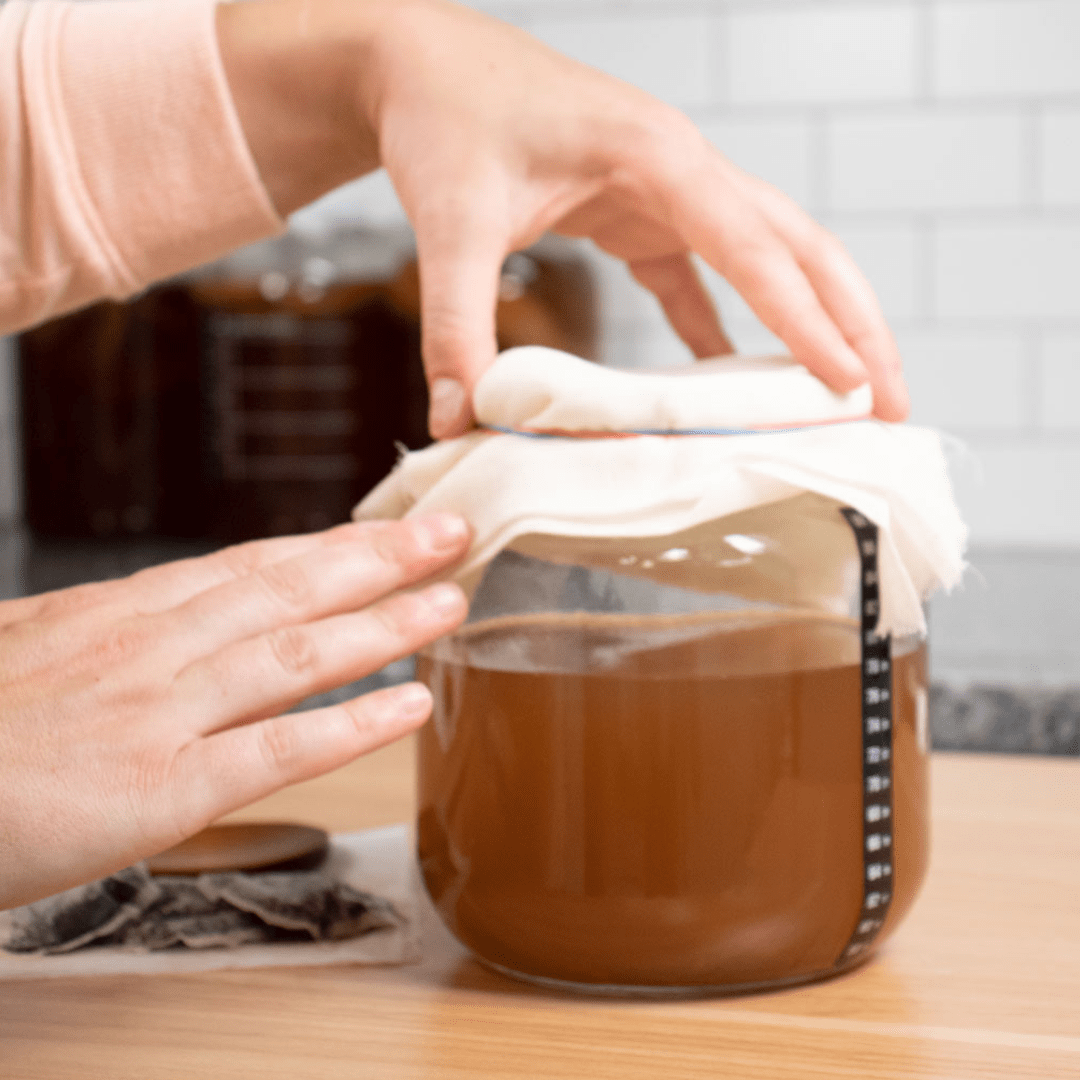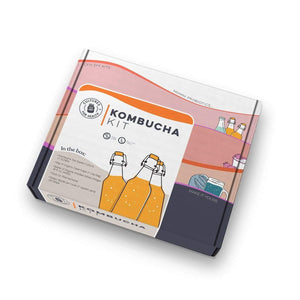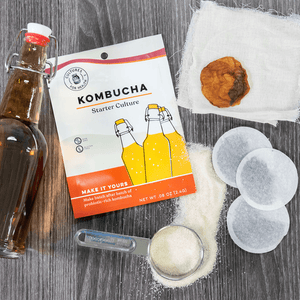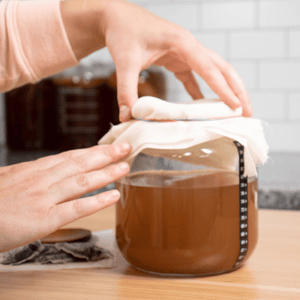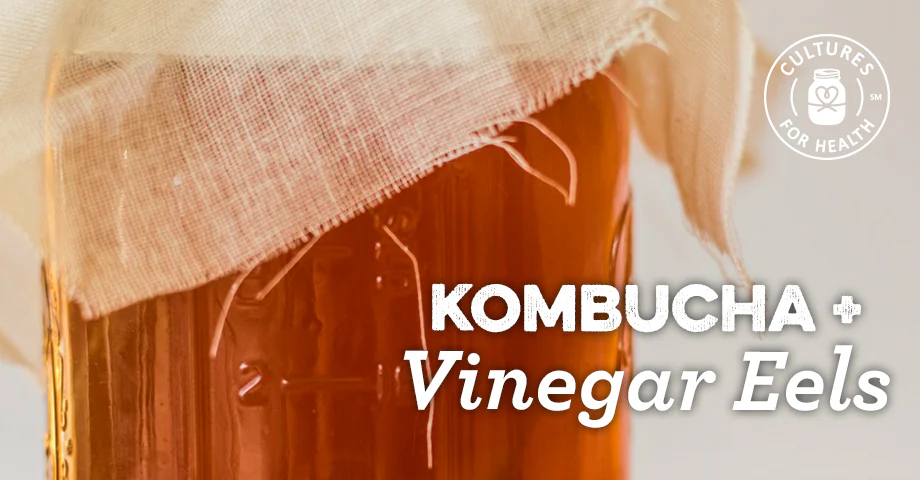
Hearing about vinegar eels for the first time can be quite unnerving. It might even make you question whether they are in your precious kombucha brew.
Even though the idea is unsettling, there is no need to panic. Vinegar eels are natural, harmless organisms and not very common in properly brewed kombucha.
We’re here to put your mind at ease by exploring the vinegar eel topic and discussing how to avoid them in your kombucha.
SO WHAT EXACTLY ARE VINEGAR EELS?
Vinegar eels are actually not eels at all, but a type of roundworm. Turbatrix aceti is a non-parasitic nematode commonly found in raw (unpasteurized) vinegar. They look like tiny worms, about 1/16 inch or 2 mm in length.
In many cases, vinegar eels will be found in clumps, floating ¼ inch from the surface of a liquid, where more oxygen is available. The FDA states they are part of the vinegar making process, and not “objectionable” unless found in the finished product on the store shelf. *
FUN FACT: Vinegar eels are actually bred as a supplementary food for fish!
Have you ever noticed small, white worms in your kombucha? These creatures are called vinegar eels, and while they may look unappetizing, they are harmless. Download our Kombucha Guide book today to learn more about kombucha's fermentation process!
HOW COULD VINEGAR EELS END UP IN MY KOMBUCHA?
Vinegar eels are usually present in raw vinegar that has been sitting around for a period of time – it’s just naturally what happens with raw vinegar. Since any liquid with sugar in it can eventually turn into vinegar when exposed to air, acidic and vinegary kombucha is also susceptible these organisms.
Luckily, it is very unlikely for these creatures to appear in your kombucha brew. The few ways they could develop would be if:
- You’ve accidentally used some type of raw vinegar in your brewing process, whether for rinsing equipment or as a starter liquid.
- You’re using a SCOBY that came from a source that used raw vinegar or had eels in it already.

How do I verify there are vinegar eels present?
If you do suspect these little wriggly worms have crept into your kombucha you can check by taking your brew into a dark room or cupboard. Shine a flashlight through the side of the glass or the top of your ceramic container. Any eels will wiggle towards the light.
Are vinegar eels safe to eat? What happens if I might have consumed them?
Vinegar eels are not parasitic and will not harm you. Within just a few days of ingesting them, they are on their way out of your digestive system, excreted the same way as any other waste.
WHAT DO I DO IF I HAVE VINEGAR EELS IN MY KOMBUCHA?
Step 1: Discard Everything
If you do discover vinegar eels in your kombucha we recommend you toss everything and start again. While there is not evidence that they are harmful, once they develop they are nearly impossible to get rid of, so it's best to start over. This includes discarding any liquid or extra SCOBYs from your brew too.
Some kombucha brewers have been known to filter their finished kombucha using a fine mesh strainer or a few layers of cheesecloth or butter muslin, and then consume the kombucha. Cultures for Health still recommends you discard everything and start over.
Kombucha Starter Kit
Step 2: Clean, Clean, Clean!
Then, clean all your kombucha equipment with regular soap (nothing anti-bacterial), sanitize it with hot water, and end by rinsing it with distilled white vinegar.
Unless you are using mason jars, do not bring your glass containers directly into contact with boiling water or you'll risk it cracking or breaking. For mason jars, place them in water, bring the water to 212º F, and boil the jars. (Boil them for 10 minutes at an elevation of 1000 feet or less. For each additional 1000 feet in elevation add 1 minute of boiling time.) For other glass containers, rinse them with hot water between 170º and 180º F.
HOW DO I PREVENT VINEGAR EELS IN MY KOMBUCHA BREW?
Most of the suggested ways to completely eradicate vinegar eels involve methods that will harm the SCOBY and are not safe for kombucha brewing. With that said, the best way to eliminate vinegar eels is to do your best to prevent them from developing to begin with. Here are some steps you can take to avoid these wriggly worms:
- Because eels are found in raw and unpasteurized vinegars, only use distilled white vinegar when vinegar is listed as an ingredient in a kombucha recipe.
- Keep kombucha acidic by using the right ratios of starter tea or distilled white vinegar for your batch size. As you make batch after batch use older, stronger starter tea that is 7-30 days old and has pH of 3.5 or below.
- Some report the presence of fruit flies in a brew later coincides with vinegar eels, so ensure your batch is covered with a coffee filter or few layers of butter muslin or cheesecloth to avoid contamination.
- Ensure your kombucha SCOBY does not come from a source that uses or has used raw vinegar.
Vinegar eels are nothing to be afraid of when brewing kombucha. If your kombucha SCOBY source is safe, has been tested for pathogens, and you use only distilled white vinegar as called for, you will likely never see vinegar eels.
At Cultures for Health we believe that anyone--on any diet and at any skill level--can make and enjoy the benefits of traditional fermented foods. All it takes is the right supplies and a little know-how. Through our product offering, recipes, tutorials, and how-to videos, we'll give you the tools you need to nourish your family and live healthy.
Download our Kombucha Guide and recipe book today!
You Can Do This.
Find everything you need to get started with one of our DIY Fermentation Kits.
Sources:
CPG Sec. 525.825 Vinegar, Definitions - Adulteration with Vinegar Eels
“Because some information which indicates vinegar eels aid in vinegar production, we do not believe the finding of vinegar eels in a firm’s bulk storage tanks or generators should be considered as an objectionable condition unless the firm’s filtration system is not functioning or unless the eels are present in the finished product.”
















